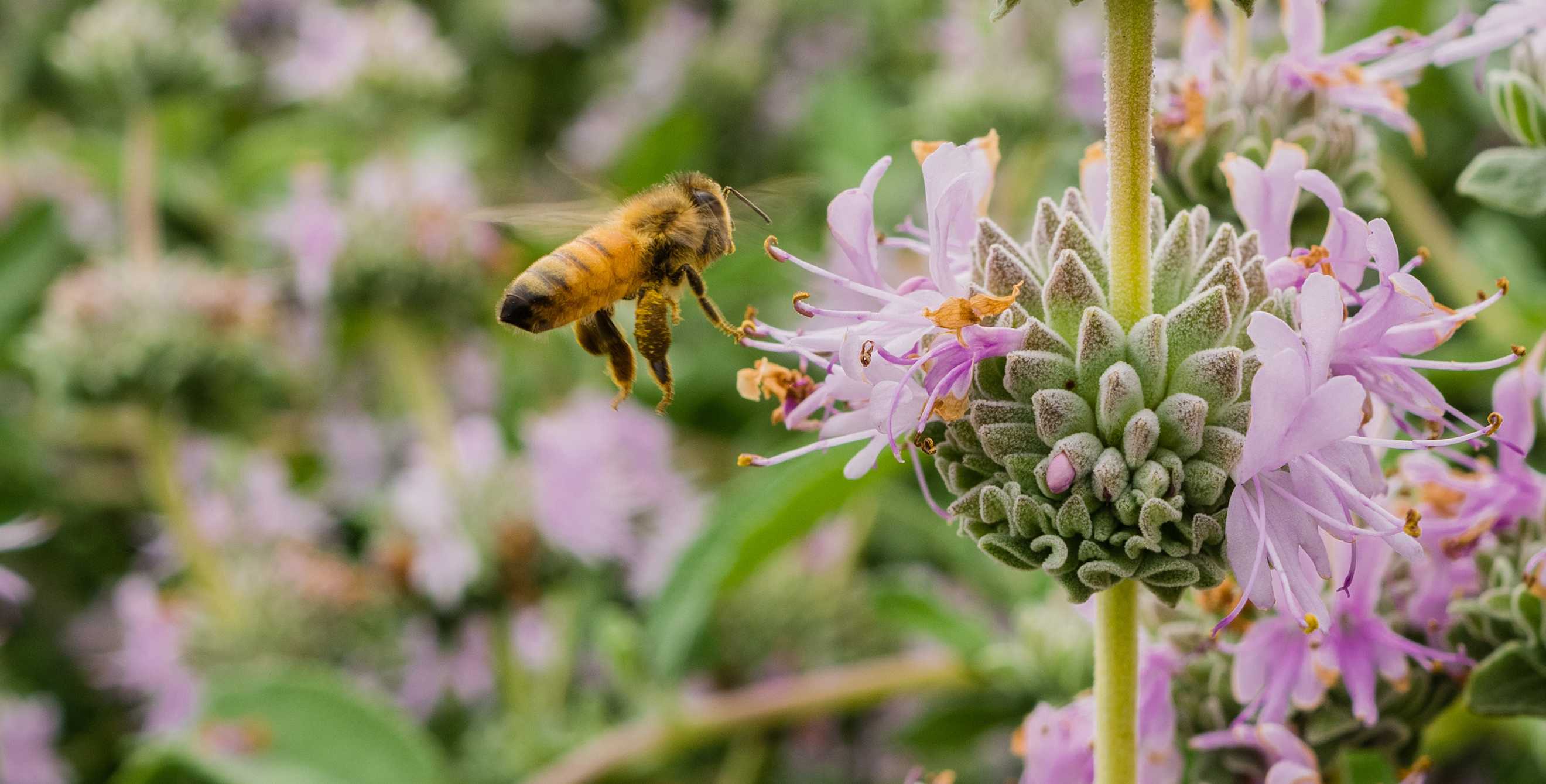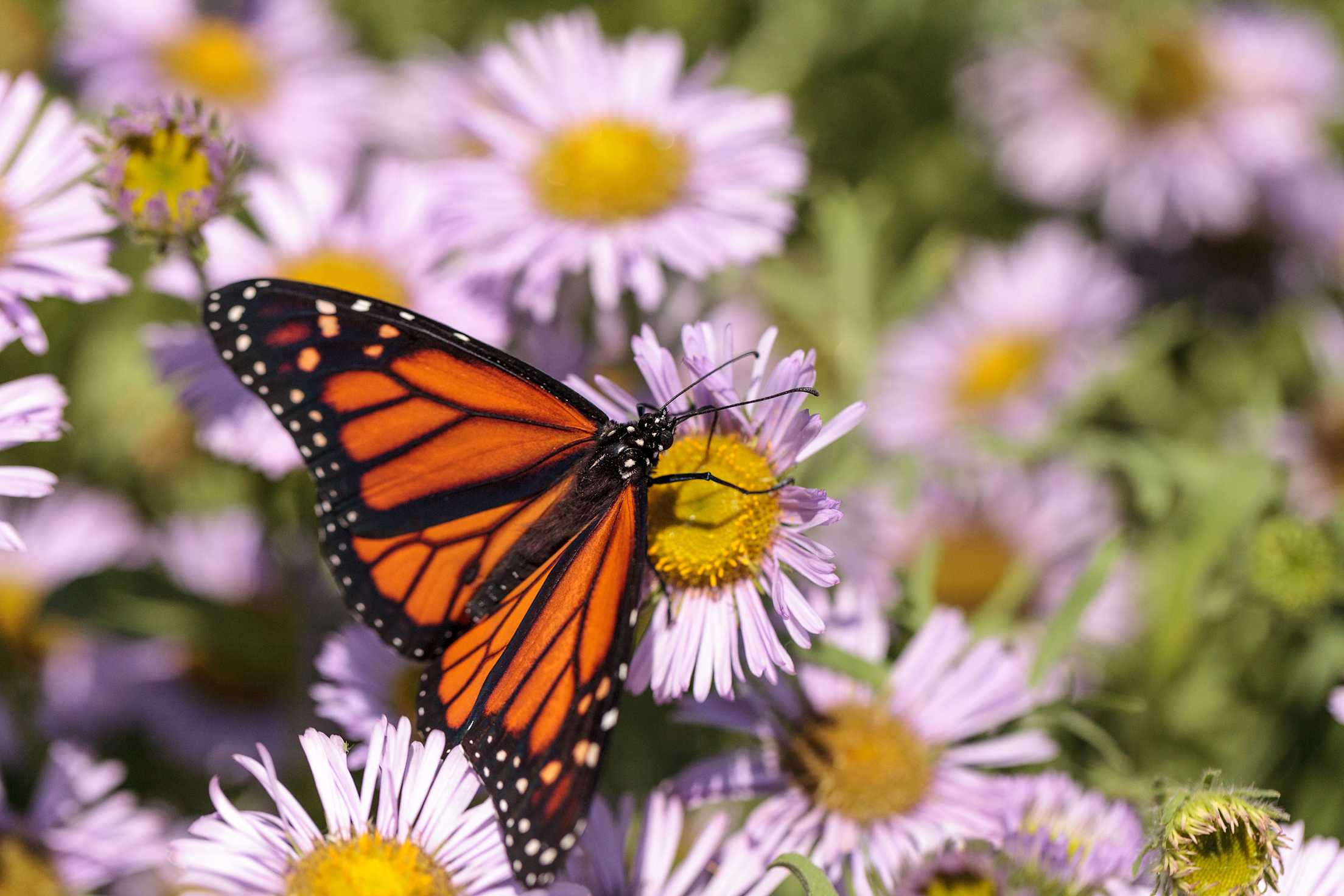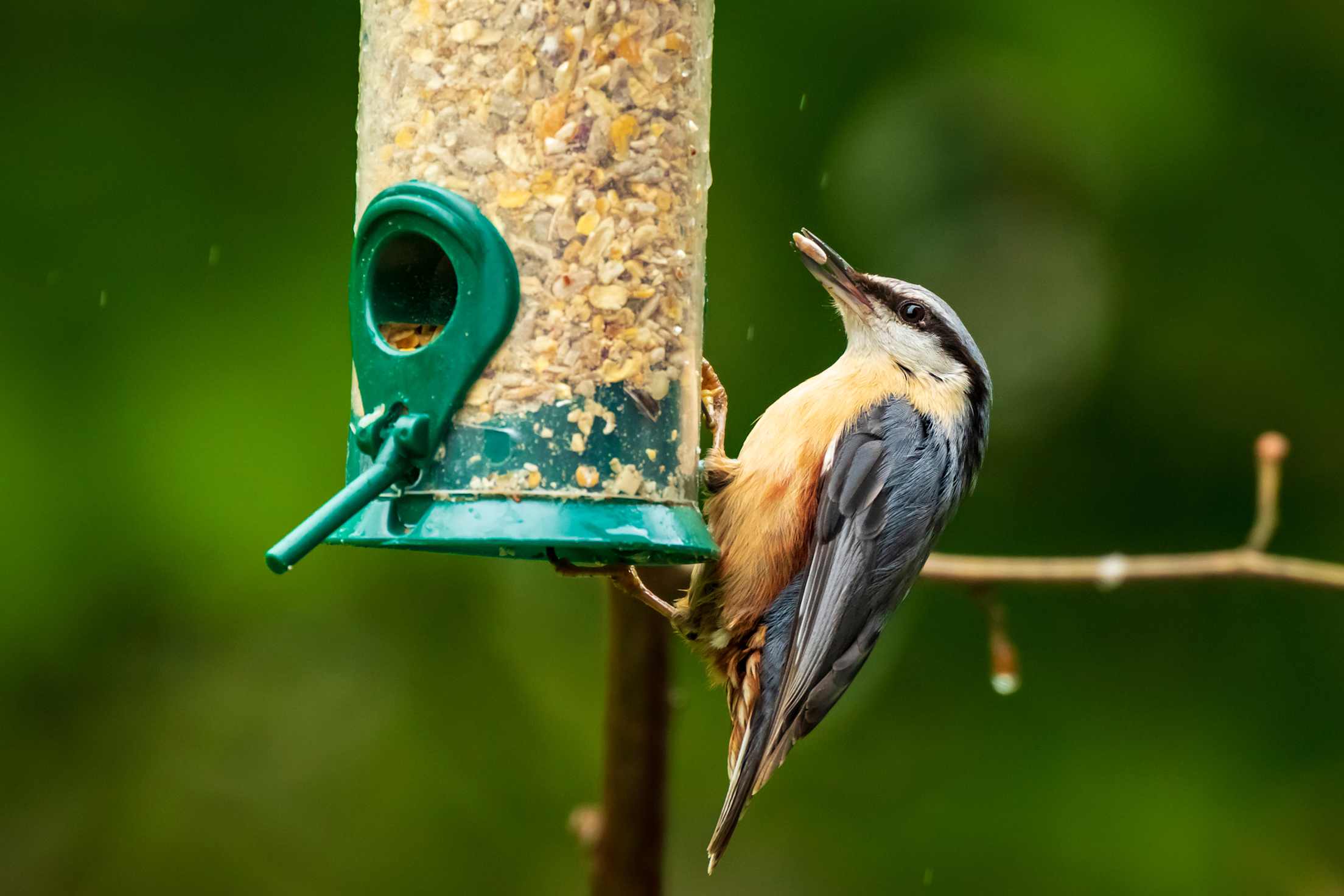
How to Make Your Garden Bird- and Bee-Friendly
Support vital pollinators and enjoy a thriving garden with these tips.

Pay close enough attention to your yard throughout the year and you’ll notice the intricacies of the environment brimming with life. As nature’s pollinators, birds and bees are key to cultivating a biodiverse ecosystem, yet many populations are declining throughout the West due to climate change and human impact. We rely on these little creatures more than we realize, so it’s important to foster a habitat where we can live with them in harmony.
“The choices that we make in our backyard really can have a substantial impact on how bird populations do over time,” says Becca Rodomsky-Bish, a project leader at the Cornell Lab of Ornithology.
Without tending to it, your garden is probably already a haven for birds, bees, and other critters. But by taking a few extra steps to intentionally plan out and care for your yard, you can make it a paradise.

Diversify your garden.
Whether you have acres of land or a small planter on your front porch, you can cultivate a habitat that helps both birds and bees by planting a diverse array of native trees, shrubs, and flowers that bloom at different times of the year. Each plant offers different characteristics—shape, color, nectar, pollen, blooming seasons—to attract pollinators that are crucial to the environment, including bats, moths, butterflies, beetles, and flies.
“With native plants, once you start to plant for one organism, all the surrounding organisms will benefit,” says Earyn McGee, one of the organizers of Black Birders Week and a PhD candidate in natural resources with an emphasis in wildlife conservation and management at the University of Arizona.
Diverse, dense, and layered are the three words Rodomsky-Bish keeps in mind when planting gardens. Numerous plant species, planted close together, and growing at different heights will provide resources year round for all types of birds, bees, and other visitors.

Stick to plants native to your region.
When you introduce plants from different ecoregions, wildlife may not find all of the resources they need to thrive and reproduce. Therefore, native plants are best for the entire ecosystem. If a monarch butterfly can’t find milkweed, it won’t lay its eggs. And if a bird can’t find enough moth and butterfly larvae to feed its young, fledglings may be underweight and struggle to survive. Native plants foster a holistic life cycle alongside healthy bird and bee populations.
“If we’re not creating the habitat that the insects need, the insects struggle,” says Rodomsky-Bish. “If the insects struggle, the birds struggle. If the birds struggle, populations struggle over time.”
Check either Pollinator Partnership’s planting guides or the National Audubon Society’s Native Plants Database to find plant varieties that attract birds and bees. Your local or state plant society—such as the California Native Plant Society, Nevada Native Plant Society, or the Arizona Native Plant Society—may also have seeds and advice. To get you started, here are a few plants that are native to the West:
- Northern California: California rose may attract nuthatches and mockingbirds; cobwebby thistle may attract wrens and waxwings. Ray Hartman’s California lilacs and Western redbud may attract bees and other pollinators.
- Nevada: Apricot globe-mallow may attract orioles and wood warblers, as well as bees and other pollinators. Engelmann prickly pear may attract chickadees and titmice. Desert peach may attract bees and other pollinators.
- Arizona: Big sagebrush may attract finches and cardinals, as well as bees and other pollinators. Alkali-Sacaton may attract woodpeckers and jays.
- Utah: Common sunflower may attract thrushes and grosbeaks. Bluebunch fescue may attract sparrows and crows. Rubber rabbitbrush and sego lily may attract bees and other pollinators.

Provide food and water.
A surefire way to attract birds and bees is by providing water and food sources. Not only will you attract your local fauna, but migratory birds will use your yard as a way station before moving on to their next stops, notes Rodomsky-Bish.
- Nectar and pollen: Pollinators, including bees, will come for nectar-rich flowers such as sunflowers, manzanita, and wisteria. To attract bees all year round, plant species that bloom in different seasons, says Stefan Braun, a member of the Northern Nevada Beekeepers Association. “All bees use ultraviolet signals from the flowers to determine which ones they want,” he says. The UC Berkeley Urban Bee Lab offers many suggestions for bee-friendly fauna.
- Hummingbird feeders: Change the sugar water every 3 to 5 days to avoid souring. Don’t use solutions with dyes because it’s not natural for hummingbirds. They will smell the sugar before they see any attractive colors.
- Seed feeders: Prevent squirrels and other rodents from gorging by placing feeders away from trees or shrubs. Look for models that are rodent-proof.
- Water source: Providing water is especially important in drought-prone and desert areas. A bird bath with texture on the bottom filled with 2 inches of water is best. Add rocks or sticks to the bath so pollinators can escape should they get stuck. Change the water every week to prevent bacteria and mosquitoes. Try placing baths at different levels in your garden to ensure that all types of bugs and birds have access to water.

Tread lightly.
If you’re located near a highway or your kids frequently play in the backyard, the noise could impact how safe animals and insects feel in your yard. While those factors might be out of your hands, you can control how you tend to the garden. Let it flourish and grow.
- Avoid pesticides altogether. If you have to use them, apply very sparingly. Remember that the birds will come for the bugs. “Whenever you’re spraying any kind of chemical in nature, even if it’s just washing a car, those chemicals have the potential to get swept down further into the ecosystem and could have damaging effects,” McGee points out.
- Leave remnants. Should you need to make a major change, think of the critters living there. “The animals will make the best of what they have,” says McGee. If you have to cut down a tree, consider leaving a branch or part of the stump to continue providing a habitat for the species that lived in the tree. “That would be great for all the organisms,” she says.
- Encourage shelters: Places that offer coverage will give birds and bees the chance to nest without disruption. Give them a home by building birdhouses and bee condos, installing them around your yard away in quiet, undisturbed places. Braun also suggests leaving dead stalks, weeds, and grasses to provide protection and other resources during the offseason. “If you can leave those until after the last frost, before cleaning them up and getting your garden ready, you’ll actually have more pollinators year round,” Braun says.
Find support within your community.
Beyond what you already know about gardening and attracting birds and bees, your local community likely has multiple resources for further learning or volunteering. It could be in the form of a group of like-minded gardeners, a community garden, the folks at your neighborhood nurseries, or an organization working to foster biodiversity in your area. Lean on these groups for more tips, advice, and encouragement.